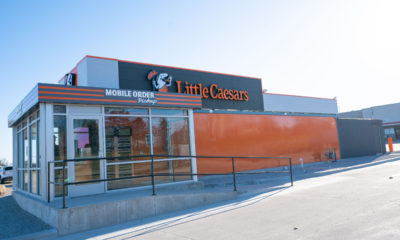Just a decade after introducing its hypermarket concept, Wal-Mart has steamrolled the grocery business.
Its Supercenters thrive because, today, people shop almost entirely for price. Which, of course, explains the phenomonal success enjoyed by – Whole Foods?
Someone at our International Retail Design Conference said, “Whole Foods makes you feel good about spending $6 a pound on heirloom tomatoes.” So much for price.
Caught in the squeeze, between Whole Foods' outstanding stores and Wal-Mart's outstanding prices, are the traditional supermarkets.
In a recent New York Times article, a woman from Denver said when she wants fresh fish, meats and produce, she drives 25 minutes to the nearest Whole Foods Market. And when she needs packaged or canned products, she goes to Wal-Mart. It has been at least a year, she said, since she entered a Safeway or Kroger. “Whole Foods may be more expensive, but it's worth it,” she said, “and I make up some of the difference at Wal-Mart.”
Advertisement
In 2004, the average American household made 70 trips a year to the supermarket; in 1996, it was 95. In those eight years, annual trips to hypermarkets and price clubs doubled, from 13 to 26.
But supermarkets aren't standing still. They know they can't get caught up trying to beat Wal-Mart on price. Rather, they're studying Whole Foods and Wild Oats for clues on improving the shopping environment. That means more fresh items, bigger produce sections, more natural and organic foods and more prepared foods. It also means figuring out how its customer shops. That's new stuff for them.
Kroger has developed three new formats: Fresh Fare, which emulates Whole Foods' level of service and carries organic produce, sushi, an olive bar, hundreds of cheeses and 2000 wines; Kroger's Marketplace, twice the size of a typical grocery store, selling everything from electronics and kitchen appliances to home office furniture and dishes; and Food 4 Less, a no-frills warehouse operation.
Supermarkets never had to understand their customers before. But Food Lion's popular new Bloom concept is “born from what the shopper wants,” according to Robin Johnson, director for marketing and brand development. “For the past several decades, stores have been run in a way that benefits the store and the company's bottom line – not the shopper.”
That had traditionally meant placing high-volume items – like eggs and milk – at the back of the store in hopes that the shopper will buy lots of other stuff on her journey. (Also easier to replenish stock from the backroom.)
Bloom places ice cream at the front of the store, on the shopper's way out, so it is less likely to melt before reaching home. And it bans promotional displays from the aisles, which – while they generate nice fees from vendors – annoyingly clog cart traffic. “Taking them out is scary,” she told The Times, “because it's revenue.” But shoppers hate them.
Advertisement
“Why have [supermarkets] played these games with customers?” Johnson asked. Because they could. But maybe no longer.
Editor's note: Last month, I said (in a column about Marshall Field's, written in October) that Chicago hadn't won a baseball championship since 1917. As a lifelong White Sox fan, I'm ecstatic to say I spoke too soon. It's still true, though, that the Cubs haven't won a championship since 1908. And, as everyone knows, it's the Cubs fan who shops at Field's.

 Headlines1 week ago
Headlines1 week ago
 Headlines1 week ago
Headlines1 week ago
 Headlines1 week ago
Headlines1 week ago
 Designer Dozen2 weeks ago
Designer Dozen2 weeks ago
 Headlines6 days ago
Headlines6 days ago
 Headlines3 days ago
Headlines3 days ago
 Headlines2 weeks ago
Headlines2 weeks ago














